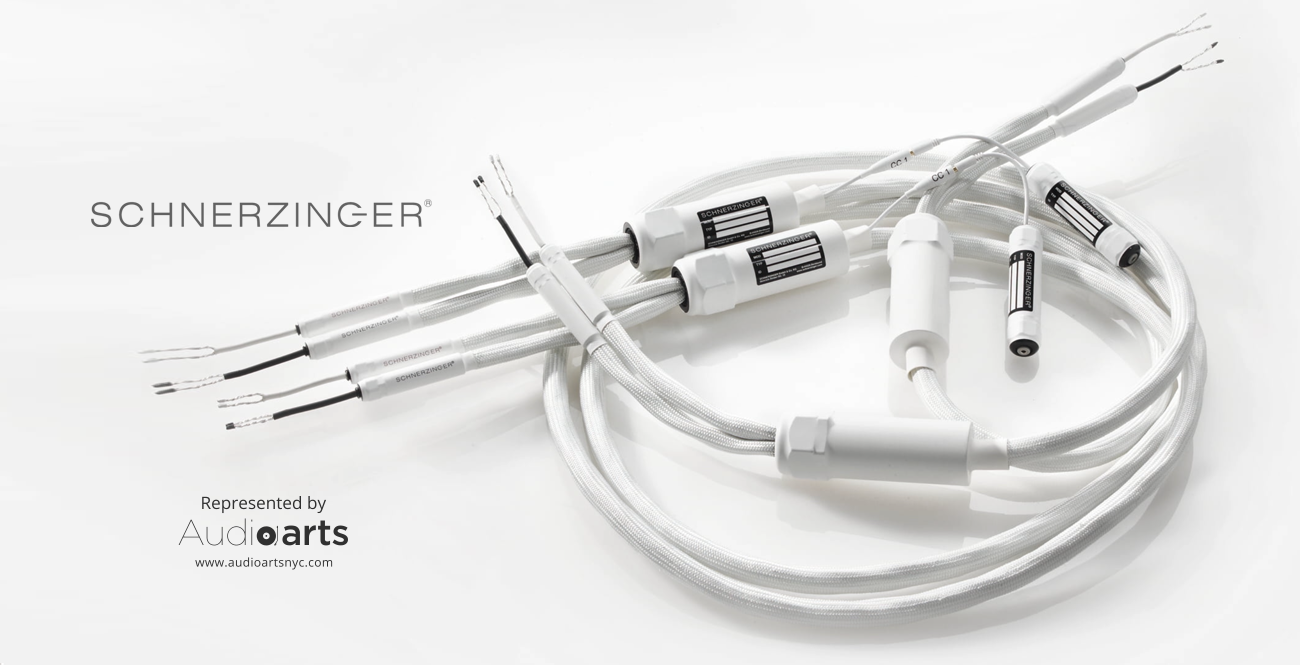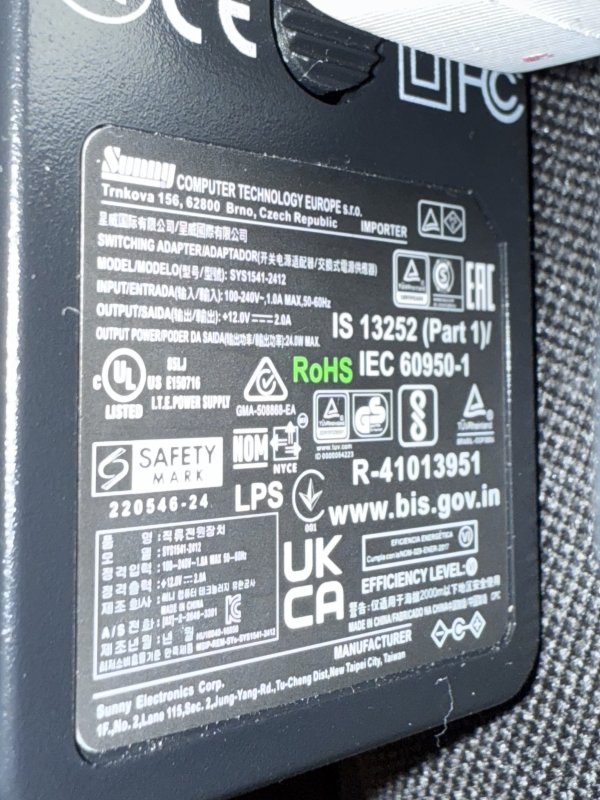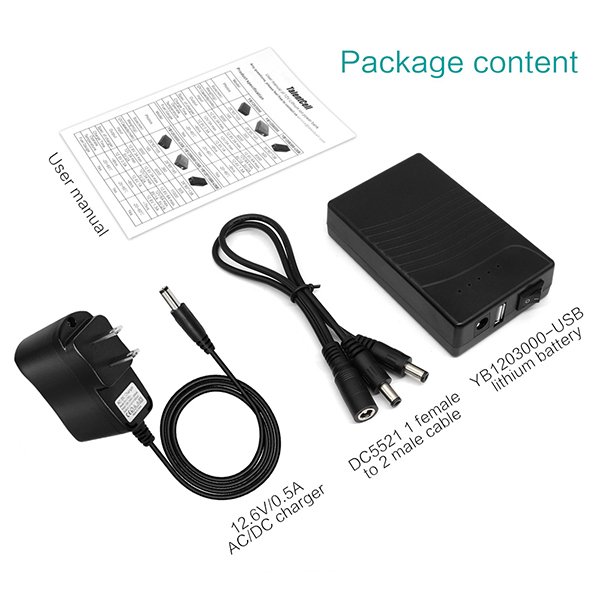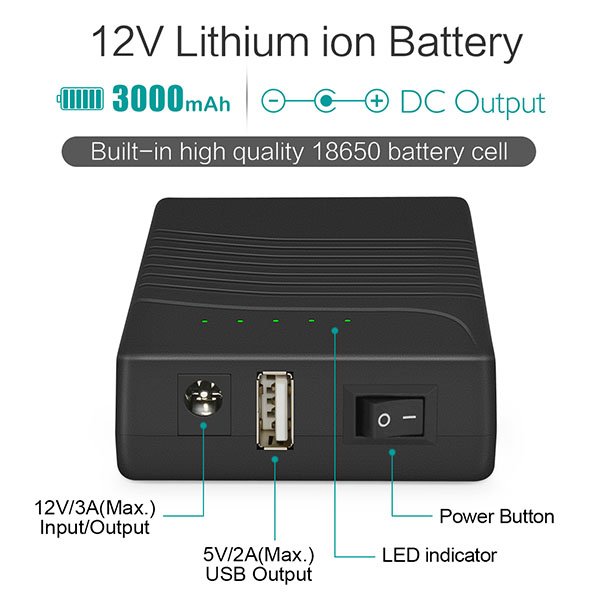You don't understand or I wasn't clear. It's not just an LED. If you look closely at the opening in the case, there is another emitter around/under the LED.Never…
we need a physicist. Does a light bulb or LED emit less light energy when covered? This would be the only explanation.

The Grid Protector, the EMI Protector and The Allocator By Schnerzinger-In My System and I’m Blown Away
- Thread starter Steve Williams
- Start date
You are using an out of date browser. It may not display this or other websites correctly.
You should upgrade or use an alternative browser.
You should upgrade or use an alternative browser.
I just see the socket around the LED…don’t think there’s anything else.You don't understand or I wasn't clear. It's not just an LED. If you look closely at the opening in the case, there is another emitter around/under the LED.
There’s a border around the LED with a gap around it. It’s not a normal LED mount.
I definitely makes a difference- try using Power 1 or 2 and then covering it up.
I definitely makes a difference- try using Power 1 or 2 and then covering it up.
I can’t test it as 1 or 2 is worse than 0 in my case. Maybe 1 or 2 with covered LED’s sound better than uncovered in my case  but I hate unnecessary fiddling. I believe that you hear what you hear, I just have no clue what could be the reason for it.
but I hate unnecessary fiddling. I believe that you hear what you hear, I just have no clue what could be the reason for it.
According to the manual, the best variant should usually be that the POWER switch is set to 0 and the 12V power supply is not connected.
The 12V power supply is only connected when the POWER switch positions I or II are used.
By connecting the 12V power supply, the corresponding GIGA CANCELING device (GRID, EMI, Master) is exposed to the power grid and thus to a possible source of contamination. This disadvantage can only be justified if the higher performance level of the GIGA CANCELING device is really needed. This means that at the 0 position of the POWER switch, operation without the 12V power supply should regularly sound better.
Therefore, the relevant comparison for the POWER switch is:
a) Position 0 and 12V power supply NOT connected
b) Position I and 12V power supply connected
c) Position II and 12V power supply connected
Thus, if you switch back from b) or c) to position 0, don't forget to completely remove the 12V power supply as well.
The 12V power supply is only connected when the POWER switch positions I or II are used.
By connecting the 12V power supply, the corresponding GIGA CANCELING device (GRID, EMI, Master) is exposed to the power grid and thus to a possible source of contamination. This disadvantage can only be justified if the higher performance level of the GIGA CANCELING device is really needed. This means that at the 0 position of the POWER switch, operation without the 12V power supply should regularly sound better.
Therefore, the relevant comparison for the POWER switch is:
a) Position 0 and 12V power supply NOT connected
b) Position I and 12V power supply connected
c) Position II and 12V power supply connected
Thus, if you switch back from b) or c) to position 0, don't forget to completely remove the 12V power supply as well.
Does anyone know where we can find a battery power pack to use instead of the ‘wall warts’?
It would make for a much cleaner install, without the wires running to the outlets, and perhaps better performance as well (since the units will not be powered by (dirty) AC).
12V 2A output
It would make for a much cleaner install, without the wires running to the outlets, and perhaps better performance as well (since the units will not be powered by (dirty) AC).
12V 2A output
Attachments
I just ordered one of these, will try it over the weekend:
 talentcell.com
talentcell.com
YB1203000-USB
TALENTCELL provide the latest in premium quality consumer electronic products and accessories. Innovation and quality mean everything. Every single TALENTCELL product is brand new and precision manufactured to meticulous standards in our state of the art production facilities. We offer a 1 year...
Attachments
I think you're overthinking this. I use the wall wart (if needed) in a separate AC circuit and reverse the polarity in the way it is plugged inI just ordered one of these, will try it over the weekend:
YB1203000-USB
TALENTCELL provide the latest in premium quality consumer electronic products and accessories. Innovation and quality mean everything. Every single TALENTCELL product is brand new and precision manufactured to meticulous standards in our state of the art production facilities. We offer a 1 year...talentcell.com
Well I don’t like the additional cords, especially to the MULTI Master which is in the center of the room (more or less), as instructed.
Oops - do not reverse the polarity - they are saying to reverse the phase. I don’t think that applies to most households. I guess it works either way as the wall wart will switch polarity automatically if reversed; but they are talking about reversing the phase. I don’t understand this as most residential systems are single phase anyway - I guess they are referring to 3 phase electrical systems.
I, probably we, have also seen numerous examples of improvements made from eliminating wall warts. For example, my Seismion active isolation bases actually make the components on top of them sound better when fed by a linear power supply!
So it’s possible that clean battery power will improve the performance of the Schnerzinger units.
Oops - do not reverse the polarity - they are saying to reverse the phase. I don’t think that applies to most households. I guess it works either way as the wall wart will switch polarity automatically if reversed; but they are talking about reversing the phase. I don’t understand this as most residential systems are single phase anyway - I guess they are referring to 3 phase electrical systems.
I, probably we, have also seen numerous examples of improvements made from eliminating wall warts. For example, my Seismion active isolation bases actually make the components on top of them sound better when fed by a linear power supply!
So it’s possible that clean battery power will improve the performance of the Schnerzinger units.
correct. Also when I built my sound room I had the electrician add another dedicated line on the floor which I thought would be helpful should I ever need my computer for streaming or other issues. Im toying with the idea of placing the master there which would be just behind my listening chair and elevate it to the height of just below the height of my chair
I’ve actually been meaning to ask Gideon about that. How do you reverse the phase? Perhaps you or someone here knows.correct
I misunderstood. What I do is take the wall wart which lacks the grounding pin and plug it into the AC receptacle in 180 degree different direction than what I have for my components. This might all change when my new speakers arrive and I reset the EMi, Grid and Multi Guards..I might find that "0"is the best power positionI’ve actually been meaning to ask Gideon about that. How do you reverse the phase? Perhaps you or someone here knows.
Yes, that is in fact reversing the polarity. The wall wart must switch automatically so it won’t blow a fuse.I misunderstood. What I do is take the wall wart which lacks the grounding pin and plug it into the AC receptacle in 180 degree different direction than what I have for my components. This might all change when my new speakers arrive and I reset the EMi, Grid and Multi Guards..I might find that "0"is the best power position
Schnerzinger advises to reverse the phase. I don’t think that applies to most households as it’s just one phase. Does anyone know?
exactly. I agree with you So far I have not installed my multi guards pending arrival of new speakers but TBH I heard no change when I reversed polarity and certainly no fuse blew
We have a 3-phase power system for households in Germany. Presumably (or hopefully) there are similar power systems in many other European and other countries.
The German manuals refer to the local conditions. The English manual is a 1:1 translation of the German one.
In the USA, there are other types of power systems. If your house has a single-phase power system, the corresponding recommendations in the manuals may not fit.
I hope that the US importer can help with his own recommendations.
The German manuals refer to the local conditions. The English manual is a 1:1 translation of the German one.
In the USA, there are other types of power systems. If your house has a single-phase power system, the corresponding recommendations in the manuals may not fit.
I hope that the US importer can help with his own recommendations.
Just wanted to touch on some of the confusion regarding the meaning of "phase" as it applies here.We have a 3-phase power system for households in Germany. Presumably (or hopefully) there are similar power systems in many other European and other countries.
The German manuals refer to the local conditions. The English manual is a 1:1 translation of the German one.
In the USA, there are other types of power systems. If your house has a single-phase power system, the corresponding recommendations in the manuals may not fit.
I hope that the US importer can help with his own recommendations.
In our manual, phase can be somewhat ambiguous with two meanings:
1. The sinus of individual current carrying wire-line for each electric device (most common use in Hifi naturally)
2. But also (in certain contexts) the primary dedicated domestic electric circuit through which, for example, all of your electric components in two of your rooms (kitchen and listening-room for instance) are supplied.
This means for example, if 3 current carrying wire-lines or "phases" (typical in Germany at least from what I gather, also called "phases“ or rather "circuits") are fed into your initial domestic power, it may yield the best results when a Grid protector operates in one outgoing phase/circuit in your installation, while the Multi Guards "phase" are added to another phase/circuit of your house.
To sum up, it is best to address and target all separate primary house circuits individually, starting of course with the hifi circuit (dedicated or not).
I'm working with Schnerzinger on new North American manuals which will avoid the "phase“ double-meaning which is common in Germany, not so on this side of the Atlantic...
Notwithstanding, and I know everybody wants to know every detail of how they operate, I implore clients to set up, try all the variations and listen with open minds and hearts. Most find the perfect balance fairly quickly and are able to listen much deeper into their music with incredible amounts of fine resolution, layering and a wave of organic ease that draws one in quite dramatically - as you all have attested to!
To clarify the terms circuit and phase:
In Germany, the power cable to the house connection has 5 wires: 3 phases L1, L2 and L3, each of which is shifted 120 degrees from each other, neutral conductor and earth. At the distribution box, the 3 phases are typically distributed evenly over the individual circuits, i.e., L1 on circuit 1, 4, 7, 10, etc., L2 on circuit 2, 5, 8, 11, etc., L3 on circuit 3, 6, 9, 12, etc. Each circuit has its own circuit breaker (or fuse) in the distribution box.
Each individual circuit has three wires, the phase L (230V, 50Hz), neutral and earth. Nowadays, every room, but also every larger consumer (such as washing machine, dishwasher, oven) should have its own electrical circuit.
To clarify the concept of the phase correct connection:
The sockets and power plugs are also significantly different from those in the US. The Schuko connectors commonly used in Germany (Schuko socket and Schuko plug) are symmetrical and therefore not polarity-proof, i.e., phase and neutral conductor are not firmly assigned. That's why many hi-fi manufacturers mark the phase on the power plug and refer to the phase correct connection in the manuals.
In Germany, the power cable to the house connection has 5 wires: 3 phases L1, L2 and L3, each of which is shifted 120 degrees from each other, neutral conductor and earth. At the distribution box, the 3 phases are typically distributed evenly over the individual circuits, i.e., L1 on circuit 1, 4, 7, 10, etc., L2 on circuit 2, 5, 8, 11, etc., L3 on circuit 3, 6, 9, 12, etc. Each circuit has its own circuit breaker (or fuse) in the distribution box.
Each individual circuit has three wires, the phase L (230V, 50Hz), neutral and earth. Nowadays, every room, but also every larger consumer (such as washing machine, dishwasher, oven) should have its own electrical circuit.
To clarify the concept of the phase correct connection:
The sockets and power plugs are also significantly different from those in the US. The Schuko connectors commonly used in Germany (Schuko socket and Schuko plug) are symmetrical and therefore not polarity-proof, i.e., phase and neutral conductor are not firmly assigned. That's why many hi-fi manufacturers mark the phase on the power plug and refer to the phase correct connection in the manuals.
clearly there is a difference between Germany and USA specifications. I think Gideon's idea to have Schnerzinger do a manual for the USA would be most helpfulTo clarify the terms circuit and phase:
In Germany, the power cable to the house connection has 5 wires: 3 phases L1, L2 and L3, each of which is shifted 120 degrees from each other, neutral conductor and earth. At the distribution box, the 3 phases are typically distributed evenly over the individual circuits, i.e., L1 on circuit 1, 4, 7, 10, etc., L2 on circuit 2, 5, 8, 11, etc., L3 on circuit 3, 6, 9, 12, etc. Each circuit has its own circuit breaker (or fuse) in the distribution box.
Each individual circuit has three wires, the phase L (230V, 50Hz), neutral and earth. Nowadays, every room, but also every larger consumer (such as washing machine, dishwasher, oven) should have its own electrical circuit.
To clarify the concept of the phase correct connection:
The sockets and power plugs are also significantly different from those in the US. The Schuko connectors commonly used in Germany (Schuko socket and Schuko plug) are symmetrical and therefore not polarity-proof, i.e., phase and neutral conductor are not firmly assigned. That's why many hi-fi manufacturers mark the phase on the power plug and refer to the phase correct connection in the manuals.
Similar threads
- Replies
- 5
- Views
- 771
- Replies
- 3
- Views
- 618
- Replies
- 290
- Views
- 17K
- Replies
- 5
- Views
- 341
- Replies
- 32
- Views
- 2K
| Steve Williams Site Founder | Site Owner | Administrator | Ron Resnick Site Owner | Administrator | Julian (The Fixer) Website Build | Marketing Managersing |





